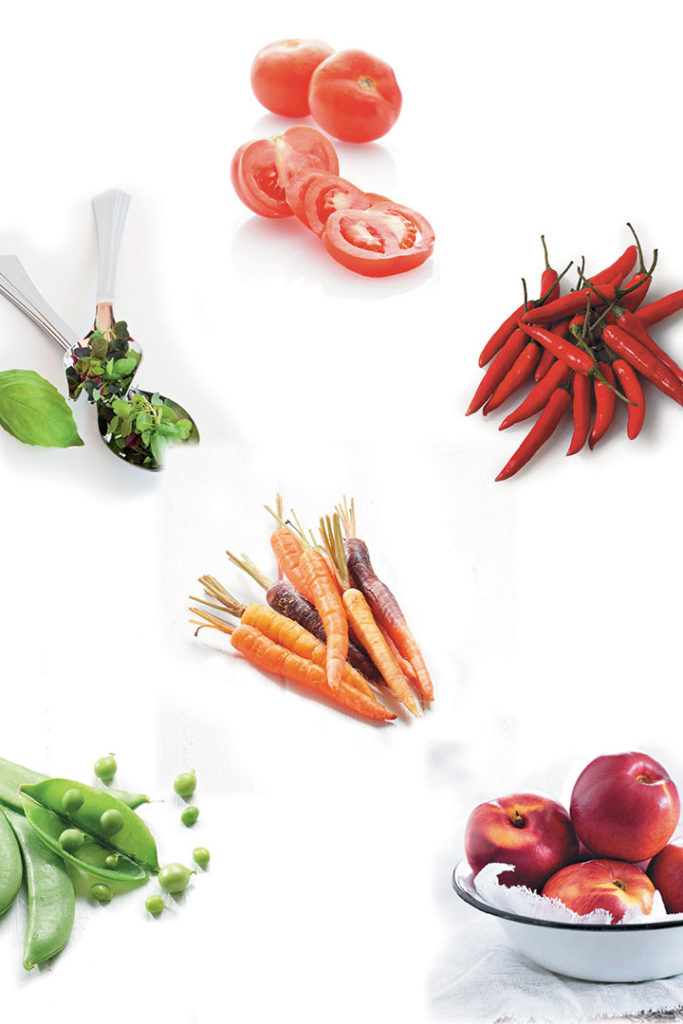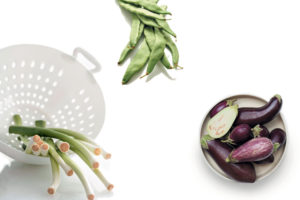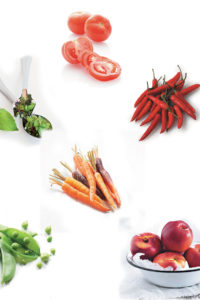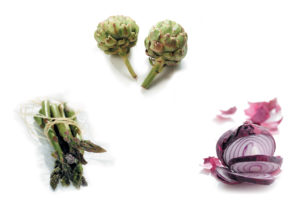How do you make home cooking even more deliciously irresistible? Use ingredients from your very own garden, of course! Alice Spenser-Higgs plots a month-by-month guide to growing your own tasty herbs and veggies.
January
TIME TO SOW artichokes, Brussels sprouts, cauliflower, loose-leaf lettuce. Last sowing of basil and dill.
GOOD TIME TO use clippings of catmint, lavender and rosemary as insect-repelling mulch.
BAD TIME TO sow tomatoes, aubergines, sweet peppers and squash.
TOP TIP Epsom salts improves the taste and colour of lettuce (15ml:5L water.)
February
TIME TO SOW Asian greens, beetroot, cabbage, carrots, onions, parsnips and turnips.
GOOD TIME TO water wisely; excess run-off from sprinklers wastes water.
BAD TIME FOR squash to rot; keep fruit off the ground.
TOP TIP Pull out old or diseased plants; they attract insects and disease.
March
TIME TO SOW beetroot, carrots, Chinese cabbage, leeks, lettuce and spinach, as well as coriander, chervil, parsley and rocket.
GOOD TIME TO fertilise broccoli and other brassicas – strong growth makes them more frost tolerant.
DID YOU KNOW? Carrots are great for small gardens – they don’t take up space and they grow quickly.
TOP TIP Nasturtiums draw aphids away from winter veggies.
April
TIME TO SOW broad beans in cold areas; aubergines, tomatoes and peppers in the Lowveld and subtropical coast.
GOOD TIME TO regularly harvest summer veggies and freeze or dry for winter.
BAD TIME TO water at night as it encourages fungal disease.
TOP TIP Ripen tomatoes faster by removing leaves that shade them from the sun.
May
TIME TO SOW broad beans, squash in warm frost-free areas, garden peas in winter rainfall areas.
GOOD TIME TO buy frost fleece.
DID YOU KNOW? Lettuce that doesn’t get enough water becomes bitter.
TOP TIP Cut the base off two-litre plastic cool drink bottles and place over seedlings to protect them from the cold.
June
TIME TO SOW microgreens and baby salad leaves in seed trays indoors, in a sunny room.
GOOD TIME TO move potted herbs to a sunny, sheltered corner.
BAD TIME TO sow anything in Highveld areas.
TOP TIP Cover plants with frost fleece from early afternoon to trap in the heat.
July
TIME TO SOW garden peas.
GOOD TIME TO prune deciduous fruit trees, order seed potatoes, fertilise lemon trees.
DON’T FORGET TO stake broad beans and Brussels sprouts, divide asparagus and rhubarb.
TOP TIP Soak peas in warm water for three or four hours before sowing.
August
TIME TO SOW leafy veggies, tomatoes and aubergines in pots or seed trays indoors.
GOOD TIME TO grow marjoram, oregano, rosemary and thyme from cuttings.
BAD TIME TO sow directly into the soil in frosty areas.
TOP TIP Planting a few seeds of each veggie every week extends the harvesting season.
September
TIME TO SOW aubergines, beans, basil, beetroot, carrots, dill, lettuce, spinach and tomatoes.
GOOD TIME TO start a compost heap or wormery.
GOOD TO KNOW Planting in triangles (not squares or rows) fits in more plants.
TOP TIP Fennel, dill, yarrow and alyssum attract beneficial insects that control pests naturally.
October
TIME TO SOW sweetcorn, sweet peppers and chillies, bush/trailing squash and melons.
GOOD TIME TO water seed beds daily.
BAD TIME FOR cutworm; protect seedlings with a toilet roll ‘collar’ pushed a few centimetres into the soil.
TOP TIP Large squash seeds planted on their side (not flat) are less likely to rot.
November
TIME TO SOW This is the last sowing month for most summer vegetables.
GOOD TIME TO thin out seedlings.
BAD TIME FOR aphids; wash off with mild soapy water.
TOP TIP Stroke your plants! Brushing your hands over the tops of young plants strengthens them.
December
TIME TO SOW asparagus, broccoli, and last sowing of cucumber.
GOOD TIME TO fertilise with a kelp-based plant tonic.
BAD TIME FOR weeds; pull out at the roots.
TOP TIP Use 40 per cent shade cloth to protect tender veggies from harsh sun.
ALSO SEE: Seasonal fruit and vegetable chart for South Africa




